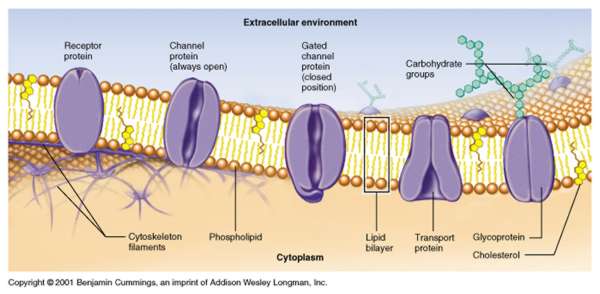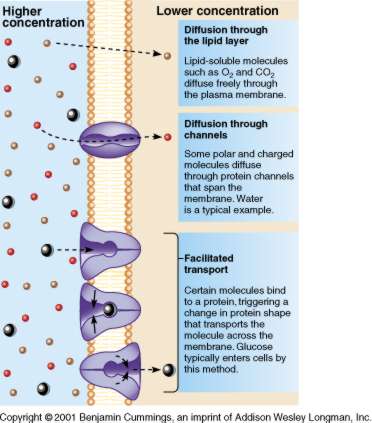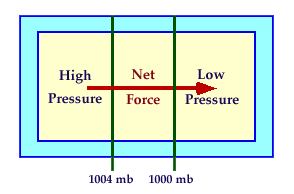Fluid Moisaic Model
 Communication Proteins
Communication Proteins















Mixed compositions of phospholipids, glycolipids, sterols and protein

Adhesion Proteins
Help one cell to adhere to another or to a protein.
 Communication Proteins
Communication ProteinsMatch up with identical proteins in the plasma membrane of an adjoinning cell.

Receptor Proteins
Cause target cells to change their activity.
Cause target cells to change their activity.

Recognition Proteins
They project above the plasma membrane and identify a cell as nonself or self.

Passive Transport
Carries molecules and susbtances from a place of high concentration to a place of low concentration.

Active Transport
Carries molecules and substances from a place of low concentration to a place of high concentration.

Concentration Gradient
Difference in the number per unit volume of molecules of a substance between two adjoining regions.

Diffusion
Name for the net movement of like molecules or ions down a concentration gradient.

Electric Gradient
Difference in electric charge between adjoining regions.

Pressure Gradient
Difference in pressure exerted per unit volume between two adjoining cells.

Osmosis
Diffusion of water across a selectively permeable membrane, to a region where the water concentration is lower.

Hypotonic Solution*
Concentrations with lower solute.
Hypertonic solutions**
Ones having more solutes.
Isotonic Solute
Show no net osmotic movement.
***
Hydrostatic Pressure
Turgor Pressure that is released by any volume of fluid.

Osmotic Pressure
Measure of the tendency of water to follow its water concentration gradient and move into that flow.

Endocytosis
Small patch of plasma membrane balloons inwardsand pinches off the cytoplasm.

Exocytosis
Vesicles move to the cell surface, and then to the protein-studded lipid bilayer.

Phagocytosis
"Cell eating" Common endocytic pathway.
















